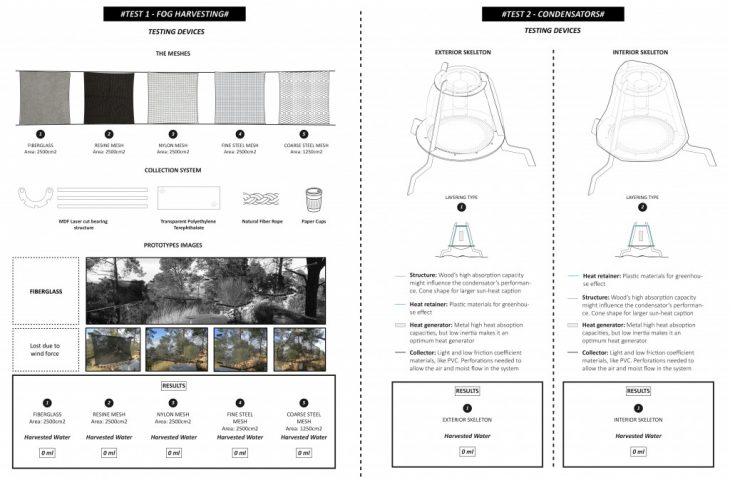#Getting Started
From the beginning, the goal of the project was to generate drinkable water using only passive strategies, based on nature and its processes. The idea started as a façade study but as the research advanced the prototype ended up becoming an architectural object that can be scaled and work in different sizes and uses as an Atmospheric Water Generator.
#State of the Art
Getting inspired by different researches and case studies like the following, we distinguished two ways of harvesting water:
- Fog harvesting: Mainly achieved by tense nets that can have many different parameters to play with – thickness, materiality, direction or pattern of the elements (MIT Case Studies)….This process works by coalescence: the droplets collide with the net thanks to the wind and eventually fuse and fall by gravity. It needs then wind and specific conditions to be efficient, as well as an effective net to not let the water drops evaporate in the way to be collected.
- Dew water harvesting: Mainly provided by the so-called Atmospheric Water generators, that we will name Condensators for this experiment. These devices work just by temperature difference. They are not constrained by geolocation or weather conditions. A humidity source is needed, but it can work even in dry areas. The droplets will be better gathered in thin objects exposed to this source: the surface radiates its heat and the moisture from air condenses on that cooled surface. Dew water condensation is considered a natural process. However, for all these conditions to happen at once all day long some extra input might be needed.

#First steps
-1 Fog Harvesting
Once it was checked that our area’s conditions were suitable for this kind of process, pur first prototype regarding fog catching consisted in the placement of a series of pre-tensed nets to study the efficiency of different materials and patterns: Fiberglass, resine, nylon, fine steel and coarse steel.
However, the results were not as expected. The relevance of the experiment depended too much on the atmospheric conditions of the moment and even then the results could not be significant enough to obtain definitive conclusions. Thus, this prototype was discarded.
-2 Condensators
The goal was to concentrate only in passive processes to generate water from the humidity of the air.
These two devices tried to explore mainly the configuration of the most basic materials and geometries, using a simple structure and principles.
Still, again, the generated water was too little to consider it a harvest, but some conclusions were reached to improve the condensators: clearly, the amount of air that was caught was not enough; or we needed some kind of extra material like MOF (a very expensive, lab fabricated material) to help its absorption. Due to these statements, it was decided that the strategy related to soil humidity would be much more interesting to further explore when focusing on passive processes.
#Prototypes
Once the main strategy was chosen, the next steps would focus on shaping a device whose own geometry could solve the main concerns: the generation of temperature difference and the water collection. Thus, the iterative process consisted on a massing procedure regarding functionality and architectural conditions.
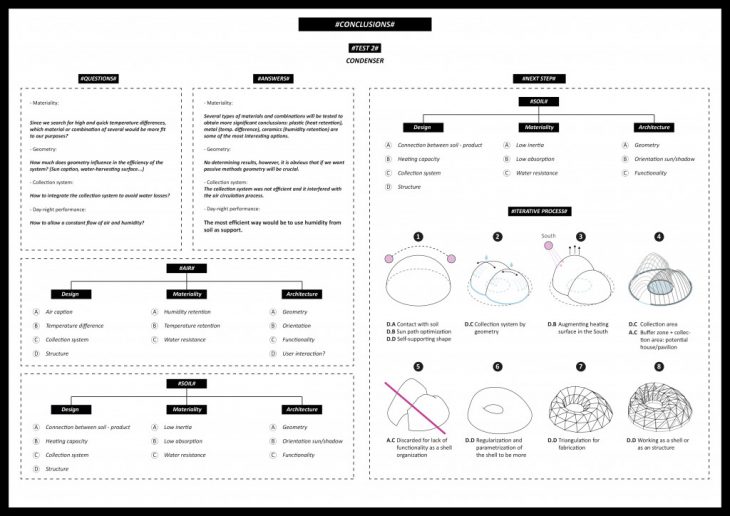
-
Techniques and materiality
Fabrication techniques were also crucial regarding this subject. Since this process of prototyping required testing different materials to test their efficiency, it made also sense to relate each one with a different fabrication technique. In this way, Metal and plastic were linked with Tessellation (Laser cut for plastic and CNC for metal), clay was linked with Casting and wood with Sectioning.
PROTOTYPE 1. Plakene + Tessellation
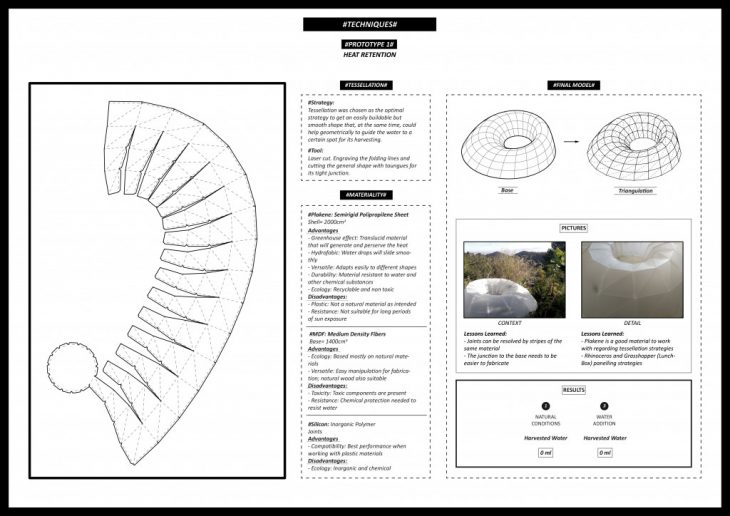
PROTOTYPE 2. Plakene + Metal + Tessellation

PROTOTYPE 3. Cardboard + Clay + Casting
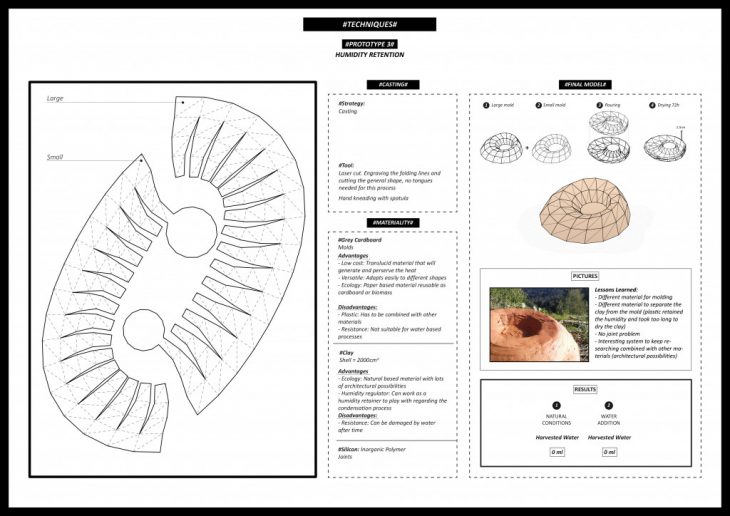
PROTOTYPE 4. MDF + Sectioning
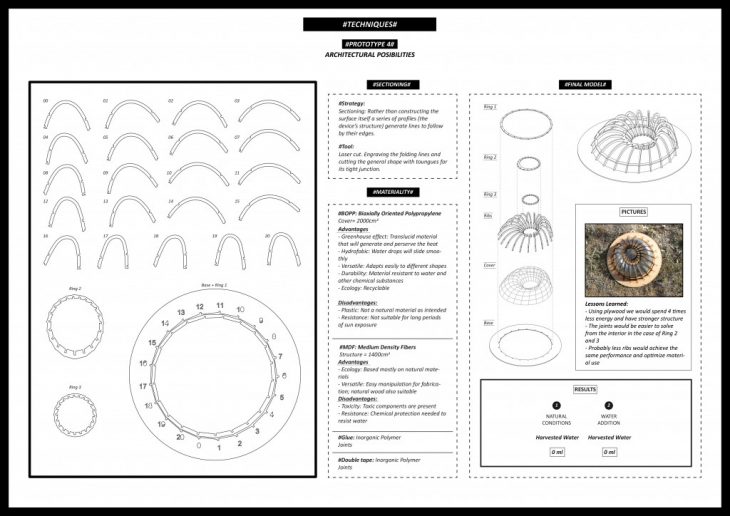
#Final result
Regarding the final results, the most efficient device was proved to be the wooden prototype. However, due to the size of the device it was difficult to measure the exact amount of water that could be collected. The next step would involve sizing it and testing in different areas to prove its consistency.
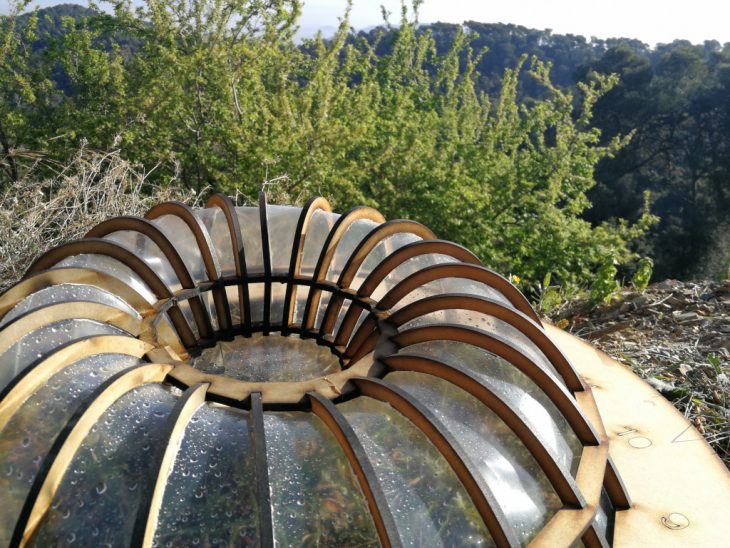
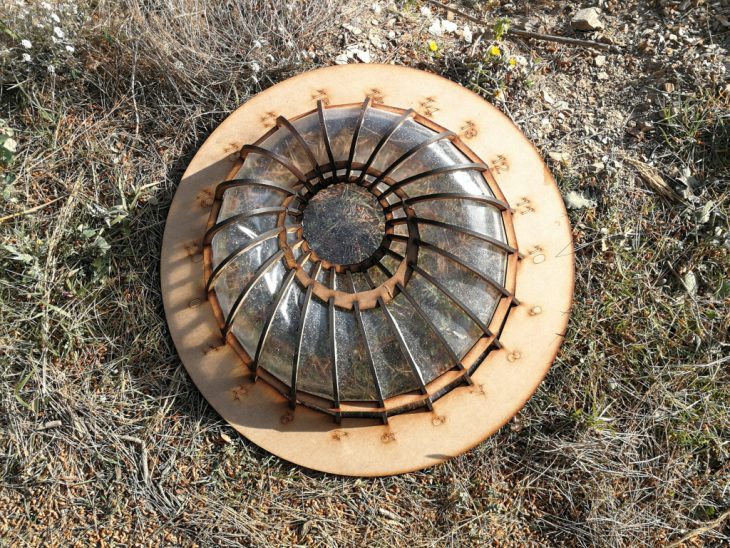
#Traceability and emergy
Our testing prototype used MDF as its main material, and thanks to these studies we realized that just by changing MDF for plywood, we could have spent 4 times less energy and shortened the process for its fabrication.
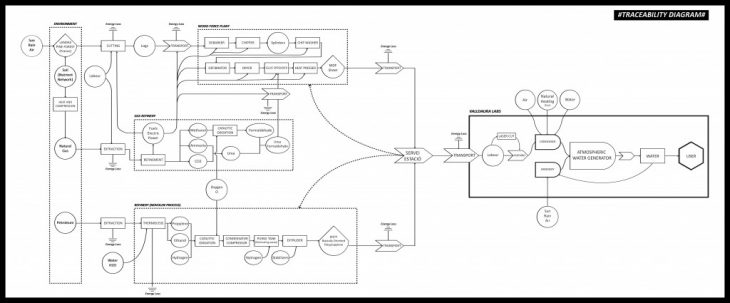
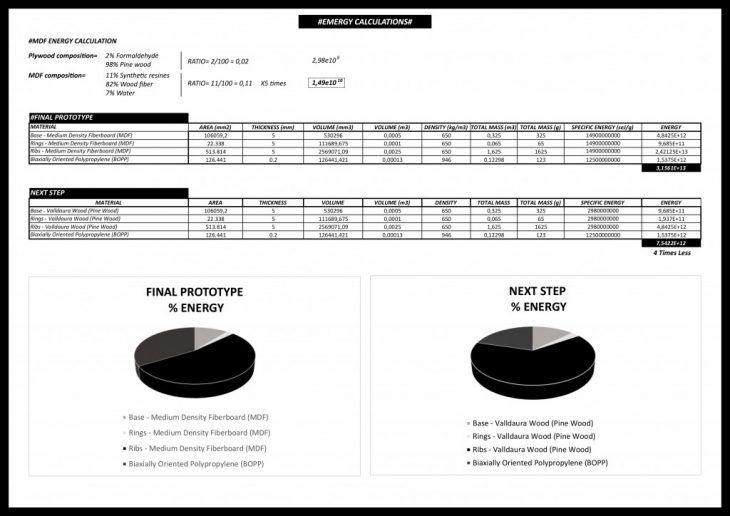
NERO-Harvesting Water is a project of IAAC, Institute for Advanced Architecture of Catalonia developed in the Masters of Advanced Ecological Buildings and Biocities 2019/20 by Students: Rafael Abboud and Irene Rodríguez, and Faculty: Michael Salka
